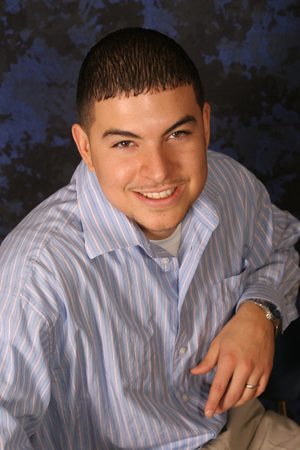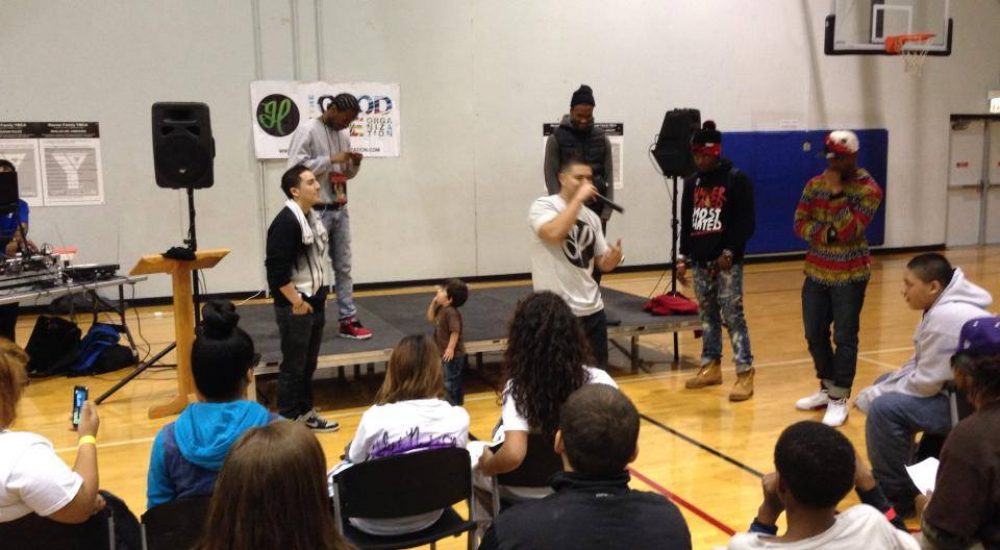Some community leaders and I were in shock when teens in our after school hip-hop leadership program came in and told us that they felt like absolute failures at school.
The disillusionment came about because these were the same youth who were presenting at regional conferences with Congress members, and opening up for international hip-hop acts. These young people, primarily young men of color, were telling us that they were treated like they were stupid at school, and constantly singled out and disciplined unjustly. One young man told me, “I feel like I have been marked as a failure by teachers and the school as a whole, and they won’t stop attacking me unless I either drop out or accept that I am a loser”. Questions began to emerge for us like: how could students who were so engaged in one area of their lives be so disengaged in another? What would the impacts be if what we have been doing in after school could transcend a program and envelope an entire school?
The sparks of these questions were fanned to flame when I wrote a proposal and finally received the funds to create a hip-hop leadership curriculum that could be implemented both during the school day and after-school. In the true fashion of hip-hop we remixed our experiences and the stories of our youth with research from Social and Emotional Learning, Positive Youth a development, and Culturally Relevant Pedagogy. We felt led to cultivate hope in our youth that Paulo Freire defined as: “acknowledging our concrete realities, and actively working towards the dreams of what is still possible.” We realized that this critical, creative, and competent hope could not be schooled in our youth but it had to be educated and drawn out. We then ventured to develop an approach that combined the arts with social emotional learning with a culturally relevant spin.
We decided to use hip-hop culture as the vehicle to engage youth and help them and their schools and communities realize that they have the potential of becoming change agents.
Our opportunity to pilot this program came when a school district we were courting was labeled as being in “crisis” by articles coming out of the state newspaper. Seeing our opportunity we approached the superintendent who seemed like he would be open to a new approach to student engagement. He explained, “we have tried every intervention under the sun, but we haven’t tried this Hip-hop stuff, let’s see what that can do”. With his blessing we were sent into the “worst school” in the district. We met with the principals and were able to ascertain that the majority of issues were coming from four classes in the school, in which we realized they were warehousing their students of color.
These students had been given every label under the sun from EBD, ADHD,ADD, and ODD. The last thing these youth needed was another intervention or prevention so before we started the program, we decided to do an all school assembly and introduce them to the invention of a new leadership program. We brought in local hip-hop artists, we spoke, and announced we were launching a hiphop leadership program to a few classes of elite youth to take place both during the school day and afterschool. This was on a Friday, on Monday we showed up to the four classes and the youth were astounded we chose them. We told them that they had tremendous influence in the school and that we wanted them to use that influence to have a positive impact on the school. We explained, that they had things they were passionate about and we wanted them to grow in these areas until they felt like they could make a positive contribution to the school culture. We held our program during homeroom once a week for about 45 minutes and gave the teachers follow up lessons on the days we weren’t there. About three weeks into it, we also started meeting with the youth after school to focus on creative skill development.
We facilitated discussions examining the difference between hip-hop culture and hip-hop industry. We explained that hip-hop culture had a long history of youth empowerment, with practitioners seeing themselves as producers capable of wielding the power to change their realities. We contrasted this with showing video clips that demonstrated how hip-hop industry was more focused on having power over young people, shaping them to see themselves as consumers, and ultimately stripping them of their power to change reality by keeping them believing fantasy and myths about themselves. We encouraged youth to think critically about the media and music they were ingesting, and similar to how hip-hop deejays sampled from classic hit records to create new sounds, encouraged them to start being intentional about “sampling” from the examples of people who lived purposefully that they knew.
Instead of mimicking these elders, we encouraged them to “remix” these examples into ways that were authentic to who they are and what they are passionate about.
As facilitator, we opened up about our own lives and shared our own personal historical records of what we felt proud of and experiences that were painful. One teacher opened up and shared an experience about losing her father just the previous summer, and in tears said that being a teacher was one way she felt like she made him proud. We encouraged students to consider their own legacies, and to realize that whether they acknowledged it or not, the younger students in the school were being influenced by their examples for better or worse. We then challenged them to think about what kind of “sounds” they wanted the music of their lives to make, and to consider what direction they wanted to move people.
We engaged our youth in sharing their voice, not only in the sharing their “blues” stories, but that they could also listen deeply to the stories of others, and cultivate deeper social awareness and empathy. The voicing of personal struggle and the dialogues that took place moved the group to creating a deeper critical consciousness about their realities and created a “beloved” community where radical healing could take place (Ginwright, 2010). Youth decided that they wanted to make a difference and that the way they were going to do so was to help reinvigorate the school talent show. This would be their platform to unleash their new found hope on the school and community at large.
Our youth performed skits about racism in the school, shared poems about struggle, and performed raps about transformation and hope. One chorus in their song went: ” It is not a new but an old thing/ we are working hard man trying to let our soul bling/ we’re not concerned what your gold brings/ we got a purpose and it is more than trying to hold things/ you serving them death Im serving them life/ you serving them wrong I am serving them right/ you are either part of the problem or the solution/ so let’s solve our problems and start a movement/. The youth got a standing ovation, and to our surprise the data also stood out as we saw GPA’s increase half a point on average in the four classes, attendance improved, and behavior issues went down. Upon sharing this data with the superintendent, he called for a town-hall meeting where we shared the pre and post data, but also had an opportunity for the youth to share their stories. One young man said, “my brother is in a gang and I have been planning to join later this year, but I am not any more because now I realize I have a dream and can see how school connects to me fulfilling that dream”. Another young man said, “used to smoke weed everyday after school but now I stopped because I can say I have hope. Upon hearing this the Chief of Staff probed him and asked: “what kind of hope is this, hope you have today and is gone tomorrow”? He looked her firmly in the eye and said, “this is a hope I will have for the rest of my life”. These youth went on to get on honor role and became the agents of change that later made this leadership program school wide, which was later served as our launch pad to doing work district wide and now across the nation.
We have since refined our youth engagement philosophy or pedagogy and call it Hip-Hope, and have created a hands on program called Fulfill The Dream combining social emotional learning and hip-hop that can bridge the gap between during the school day and after school. After implementing our approach over the last ten years, we have seen alternative high schools have 100% graduate rates after one year of implementation, we have seen GPA’s go up as much as full points in as little as ten weeks, and the Y-Cincinnati was named the top after school association by the Y-USA after using our program. We are now determined to scale our work, with the goal of reaching over a million youth by the year 2020.
We are excited to share our experience, research, and resources with youth workers at the BOOST Conference during my Master Class at the BOOST Conference. *2016
For breakfast I had eggs and veggie sausage.
 Rivera is an expert in connecting positive youth development to community development using culturally relevant methods. He has employed asset-based and social emotional learning principles for over ten years in community-based youth work in Los Angeles, Milwaukee, and Chicago. He has most recently been named one of the “Top Young Change Agents in America” by the Search for Common Ground Coalition, and in 2012 became a fellow through the Unreasonable Institute for his social entrepreneurship skills. Roberto speaks at national and international conferences expressing powerful learning lessons linking the asset framework to organizational and community efforts with and for young people. Since he was once labeled “at-risk” himself, Roberto passionately advocates for giving young people sufficient support and opportunities so they can take positive risks and become change agents themselves.
Rivera is an expert in connecting positive youth development to community development using culturally relevant methods. He has employed asset-based and social emotional learning principles for over ten years in community-based youth work in Los Angeles, Milwaukee, and Chicago. He has most recently been named one of the “Top Young Change Agents in America” by the Search for Common Ground Coalition, and in 2012 became a fellow through the Unreasonable Institute for his social entrepreneurship skills. Roberto speaks at national and international conferences expressing powerful learning lessons linking the asset framework to organizational and community efforts with and for young people. Since he was once labeled “at-risk” himself, Roberto passionately advocates for giving young people sufficient support and opportunities so they can take positive risks and become change agents themselves.
